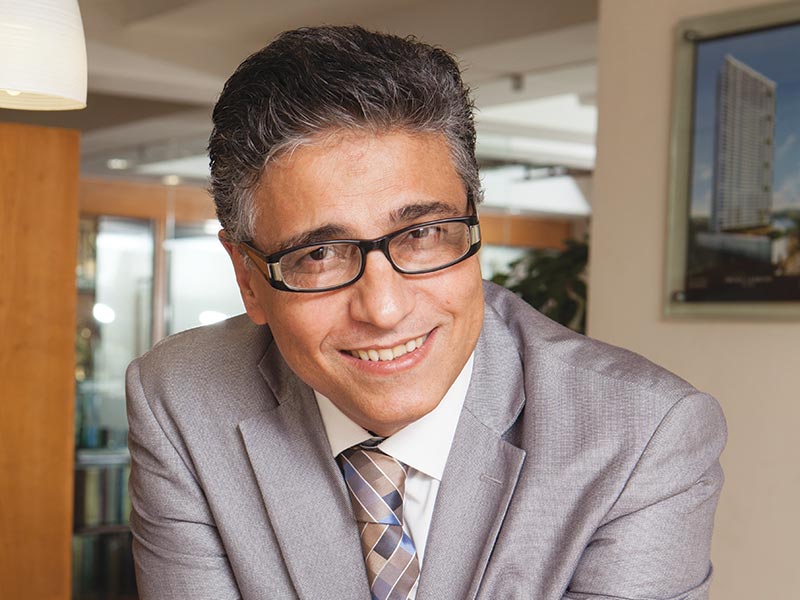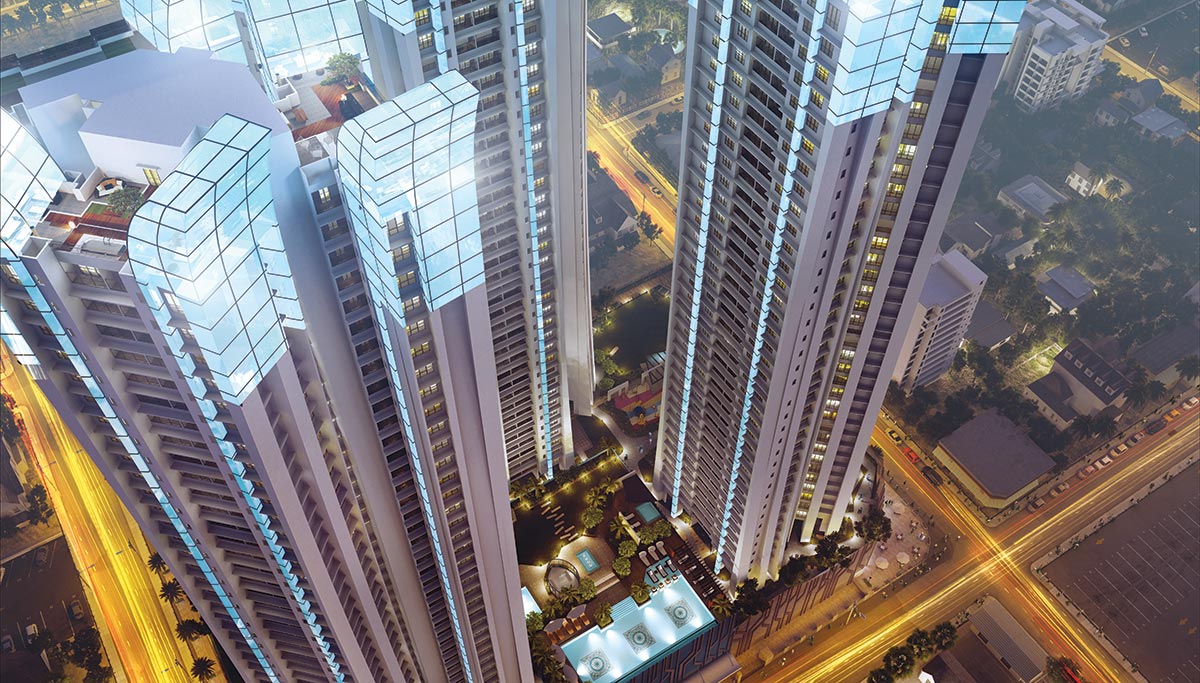
As the focus on the future of the country comes into perspective, efforts have been made by various organizations to popularize sustainable construction practices. Developers are showing strong commitment to deliver advanced designs without drastically increased budgets. Increased day lighting with innovative facades, structural glass to gain increased transparency, reuse/recycle materials for minimum wastage are considered at the initial phases of design. These are just basic steps towards better living in our future. We as architects are working towards achieving this.
The awareness of green and sustainability has crept into the end-user as well, and developers are certainly doing their best to cater to these demands. The future of what the country shall be, is in what is being designed today.
 Ekta Tripolis, Mumbai
Ekta Tripolis, MumbaiIndia is yet at a nascent stage where green and sustainable buildings are concerned. While several within the industry are adopting / trying to adopt methods that are sustainable, there is a need for a wider acceptance. The common man is still not fully aware of the importance a green building plays in the saving of resources in today’s time. A person, be it a designer or a client, should realize and understand the benefits of a sustainable design, its impact on the surroundings and the future generation. Sadly, the long-term expenses to the short-term expenses are considered in the case of green and sustainable construction. The end-users and the industry have to realize that even though the initial investment is higher than normal, but in the long-run, it helps conserve energy resources.
Awareness of green and sustainability has crept into the end-user as well, and developers are doing their best to cater to the demand; the future of what the country shall be, is in what is being designed today
I admire...
Masdar City in Abu Dhabhi (UAE) can be considered as an icon for modern sustainability. The low-carbon development of Masdar City is designed to maximise convenience and reduce environmental impacts. The development incorporates solar photovoltaic plant and panels that reduce the need for power produced by fossil fuels. A 45 meter high wind catcher, similar to a traditional Persian architectural element known as the Badgir, sucks air from above and pushes a cooling breeze into the streets. Furthermore, the incorporation of various zones in close vertical and horizontal proximity reduces the need for transport. Water conservation too is ensured by using high-efficiency appliances, low-flow showers, a water tariff, smart water meters and treated wastewater, which is recycled for plant irrigation.















